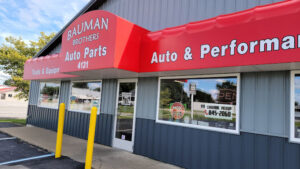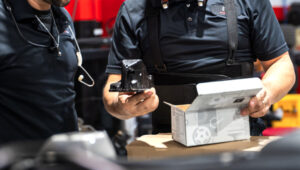The online purchase of parts that are installed offline at repair outlets has generated the most significant increase in eCommerce business across the aftermarket
Fort Wayne, Ind.—o2o eCommerce is disrupting the relationship between consumers and repair outlets as it expands the range of automotive products that can be purchased online and installed offline — and it’s changing the Do-It-For-Me (DIFM) market across the U.S.
New consumer research by Lang Marketing has provided insights into the fast-growing o2o DIFM market and how the changing perceptions and needs of different generations of consumers are fueling o2o expansion.
Here are the highlights from Lang’s latest report.
Online to Offline
Online to Offline (o2o) DIFM sales involve the online purchase of auto parts installed offline at repair outlets. o2o auto repair has generated the most significant increase in the eCommerce business mix across the aftermarket between 2016 and 2022.
o2o’s share of eCommerce auto parts transactions increased by more than two-thirds between 2016 and 2022, with o2o sales increasing by nearly five-fold at user-price.
o2o’s Expanding DIFM Reach
Today, o2o auto repair has potential access to over one-third of the DIFM market. Over the next five years, the reach of o2o auto repair will expand significantly, propelled by advanced vehicle diagnostics, artificial intelligence (AI), intelligent components, and the use of “big data.”
By 2028, the reach of possible o2o repair will extend to over half of the DIFM light vehicle market.
Average Annual Growth: eCommerce and o2o
• eCommerce auto parts sales topped 12% average annual growth between 2016 and 2022. This was over five times the growth rate of the overall light vehicle aftermarket.
• o2o auto parts sales climbed even faster, increasing at an average annual rate of more than 32% between 2016 and 2022.
• o2o increased its share of eCommerce sales by two-thirds between 2016 and 2022, as it significantly topped the average annual rate of eCommerce auto parts growth.
• o2o transactions generated nearly 36% of total eCommerce auto parts growth between 2016 and 2022, much more than its average annual share of eCommerce auto parts sales.
Generational Differences
Many consumers, particularly Generations Y and Z, accounted for a greater share of o2o repair than their corresponding strength in the overall DIFM market.
Trust Is a Critical Difference
Millennials and Generation Xers have more trust in purchasing auto repairs from platforms and large eSellers than in dealing with local repair shops directly.
Convenience and No Hassel
The convenience of ordering parts and repairs online, thus avoiding direct contact with repair outlets and unnecessary travel to mortar and brick shops to discuss automotive work, is a significant consumer benefit of the o2o auto repair model.
o2o auto repair offers the added convenience of an approved installer network, enabling consumers to choose the time and place of repair.
Future Developments
Large platforms and eSellers recognize that o2o auto repair provides a means for expanding their penetration of the vehicle repair business. This offers an alternative to the more complex approach of supplying parts to installers, who often demand rapid delivery that requires significant warehousing and delivery resources.
In contrast, the o2o model allows several days between the time parts are purchased and when a member of the approved installer network conducts the repair.







Comments are closed.